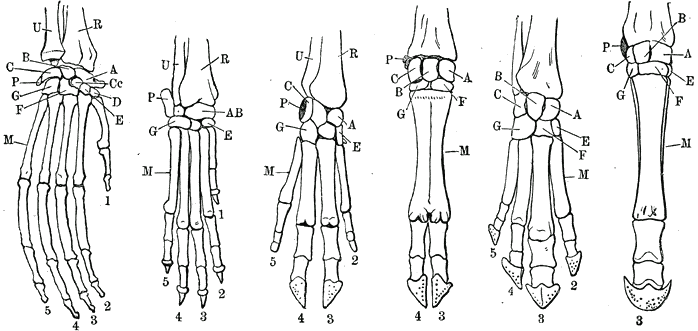homology

Homology forms the basis of organization for comparative biology. In 1843, Richard Owen defined homology as the same organ in different animals under every variety of form and function. Organs as different as a bats wing, a seals flipper, a cats paw and a human hand have a common underlying structure of bones and muscles. Owen reasoned that there must be a common structural plan for all vertebrates, as well as for each class of vertebrates.
Forelimbs in mammals provide one example of homology.























